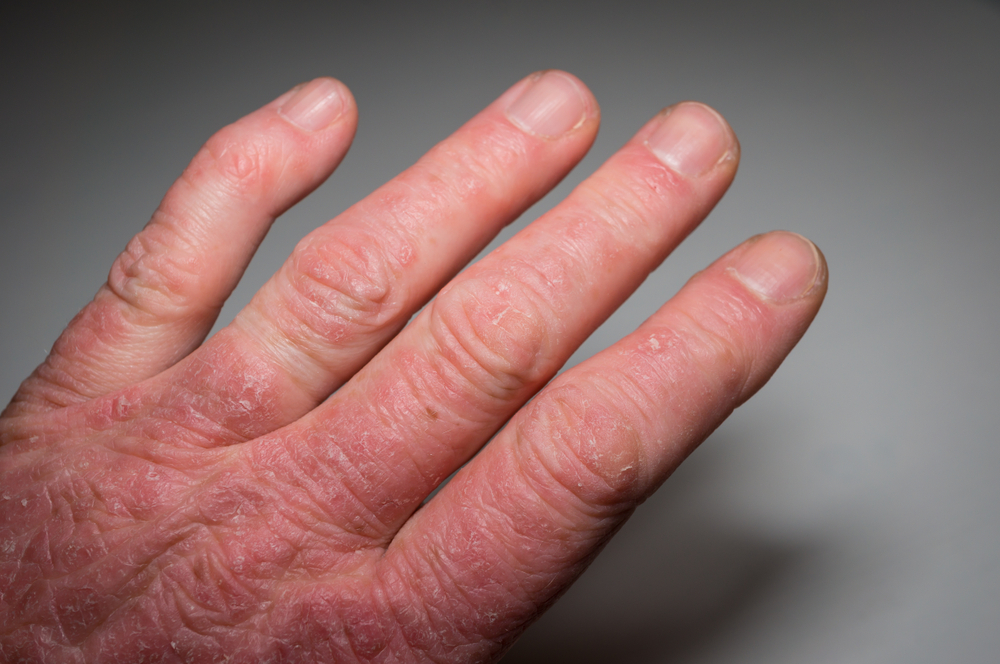Psoriatic arthritis is a form of joint inflammation that affects people with psoriasis – an autoimmune condition that causes red, itchy scaly patches on the skin. Most people are diagnosed with psoriasis years before being confirmed and diagnosed with psoriatic arthritis. Commonly affected joints include those in the hands and toes, and spinal vertebrae joints. Without treatment, the joint inflammation could worsen over time. This article will look at the risk factors, symptoms, and treatment for patients with psoriatic arthritis.
There are around 1-9% of the population in Asia living with this autoimmune joint condition, compared to a higher number of 6-42% of the population in Caucasian countries. However, many believe the real number in Asia is much higher than that is reported due to the lack of medical services in underdeveloped regions.
PSA: Medical Channel Asia (MCA) is now on Telegram! Join us here https://t.me/MedicalChannelAsia for daily reads and the latest updates at your fingertips!
Risk factors for Psoriatic Arthritis
Unfortunately, scientists have yet to figure out what are the actual causes of autoimmune conditions such as psoriasis and psoriatic arthritis. Psoriasis happens when skin cells regenerate at a faster speed than normal. The rapid turnover of cells results in scales and red patches.
Both genetic and environmental factors could contribute to the development of this autoimmune join condition. Some common risk factors are:
- Psoriasis: having psoriasis is the greatest risk factor that results in psoriatic arthritis
- Family history: people who have parents or siblings with the same condition are at greater risk pf developing it as well
- Age: the main age group of psoriatic arthritis patients is 30 to 55 years old
Symptoms of Psoriatic Arthritis
In patients with psoriatic arthritis, the immune system starts to attack their joints, resulting in painful, still and swollen joints. Symptoms, in general, are very similar to rheumatoid arthritis, another autoimmune condition that causes joint inflammation.
- Swollen finger and toe joints: fingers and toes can resemble sausages, with severe pain and swelling
- Lower back pain: this can happen due to inflammation of the spinal vertebral joints, resulting in the presentation as lower back pain
- Nail pitting: nails can form dents, crumble, or separate from nail beds
- Eye pain: due to uveitis, if left untreated can lead to vision loss
Diagnosis
Usually, the diagnosis of this autoimmune condition requires rheumatologists to make a formal diagnosis. X-rays, MRI, CT scans should be carried out to look at the joints in detail. Blood tests are also required to rule out other common causes of joint inflammation such as gout and/or rheumatoid arthritis. Skin biopsies are needed to confirm psoriasis.
Treatment
Sadly, there is currently no cure available that is specifically for the treatment of psoriatic arthritis. Thus, the treatment for this autoimmune condition is usually focused on minimising the symptoms and improving patients’ quality of life, either by reducing the pain symptoms or using medications to slow down the progression of the inflammation.
- Pain management: non-steroid anti-inflammatory drugs such as ibuprofen or naproxen are commonly used as first-line analgesic medication.
- Anti-rheumatic medication: sulfasalazine, methotrexate, and leflunomide could be considered to delay the worsening of joint inflammation.
Both psoriasis and psoriatic arthritis are chronic diseases without cure. However, palliative treatment can reduce the level of inflammation and prevent patients develop depression or significant mood changes. Meanwhile, people with psoriasis usually have high blood pressure, high cholesterol, obesity, and diabetes. Cardiovascular management is almost always required in addition to inflammation specific medications.












